Study characterizes cultivation techniques, farm placement, management and regulations to mitigate risks and maximize the benefits of aquaculture
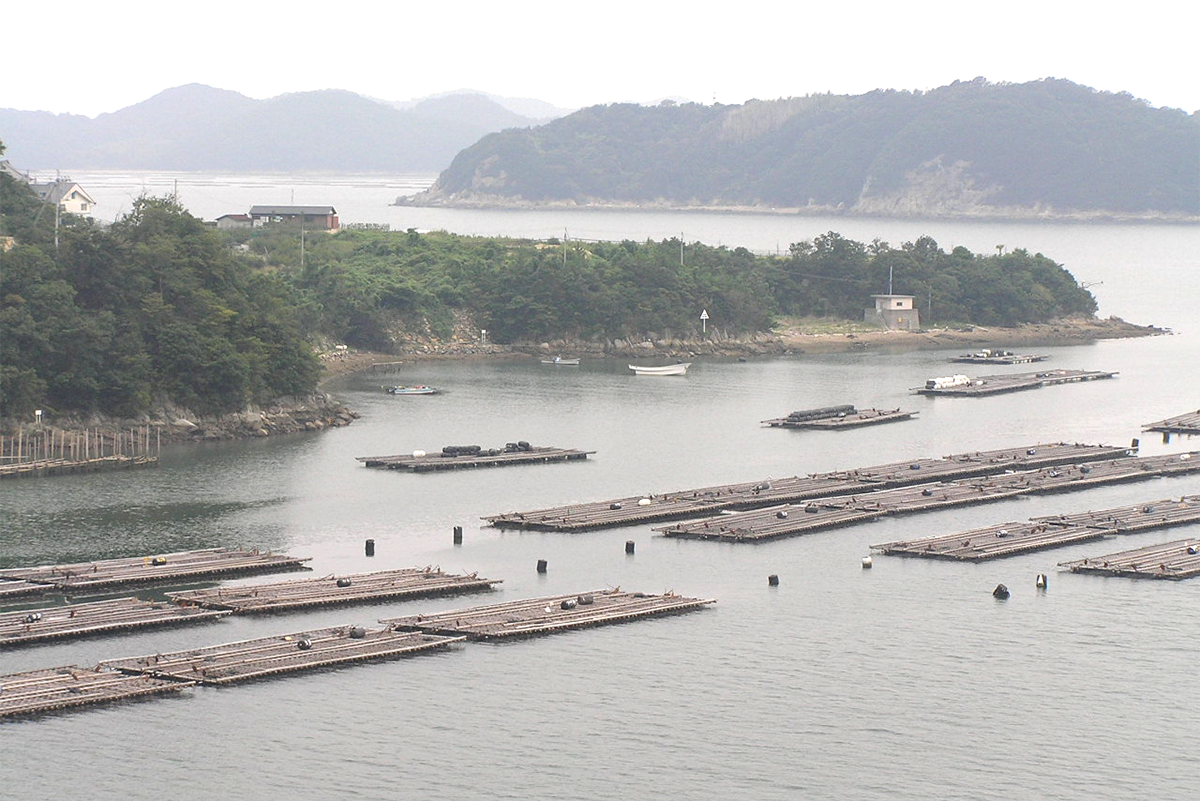
Cultivation of “unfed” species like bivalves and algae occurs in large volumes at low cost as they consume particulates that occur naturally in the water column. Thus, these species have a high food-security potential relative to finfish. Despite their value, the production of mollusks and seaweeds grew less rapidly than their fed counterparts (fish and crustacea) between 1980 and 2020.
While fed aquaculture species typically have a small spatial footprint in the ocean, unfed aquaculture species require extensive areas for culture. Identifying farm environments that fit the narrow range of conditions suitable for production without conflicting with the interests of other coastal users is challenging. Competition for space can occur between farms, fisheries, shipping, tourism and the recreation sector, which together can saturate suitable environments. The placement of aquaculture installations is also limited by physical forces in the coastal environment (wind, waves and currents).
Progress has been made in mapping farms via remote sensing technology to produce databases of aquaculture production. However, different countries have idiosyncrasies in technology use which depend on local regulatory, economic and environmental limitations. While major production areas are well known, little information exists on the diversity of size, type and spatial characteristics of farms on either local or global scales.
This article – summarized from the original publication (Harvey, M. et al. 2024. Ocean sprawl: The global footprint of shellfish and algae aquaculture and its implications for production, environmental impact and biosecurity. Aquaculture Volume 586, 30 May 2024, 740747) – reports on a study that used satellite imagery to identify suspended aquaculture structures and assessed their density, type and distance from shore in five countries (China, South Korea, Chile, Japan and Vietnam) that produce more than 90 percent of globally cultured shellfish and algae.
The authors used production data from the United Nations Food and Agriculture Organization (FAO) for China, South Korea, Chile, Japan and Vietnam and additional data from aerial imagery available via the Google Earth platform. The data were used to map locations and characteristics of suspended bivalve and algae aquaculture across these five largest producing nations globally, tested for differences in the presence of structures across countries and quantified local variation by exploring the relationship between structure type, density and placement relative to shore.
This study extends spatial approaches by applying a custom manual methodology to map the shellfish and algal mariculture industries for the first time which, combined, produced over 60 million tons of live weight in 2020. For additional information on the data and analyses, refer to the original publication.
Farm type, density and distribution of suspended shellfish and algae aquaculture
Analysis of the extent and position of cultivation infrastructure used to produce shellfish and algae across the world’s major production areas of China, South Korea, Japan, Chile and Vietnam revealed considerable variation in structure density, type and placement relative to the shoreline. This variation has implications for the use of marine space, production by the industry and its ecological effects on the natural environment.
More infrastructure was present in China relative to the other four countries, which reflects China’s position as the leading producer of both bivalves and algae, followed by South Korea and Chile. Numerous farms were found along the coast of Fujian province, which is a major production region of shellfish and accounts for 43 percent of kelp production in China. The observed patterns of farm distribution across production areas are likely a culmination of factors related to local environmental and socio-economic conditions.
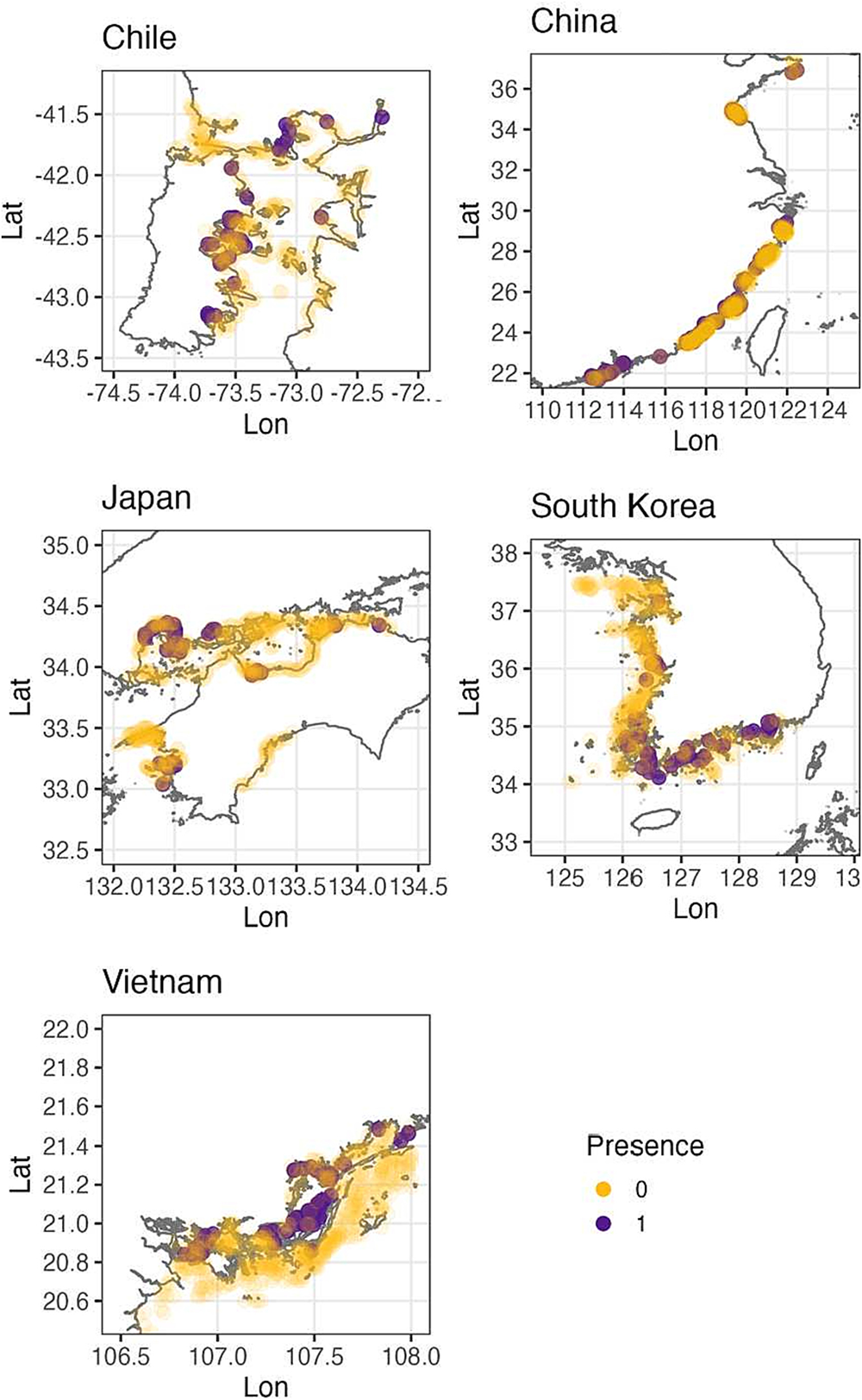
Structure density was particularly high in South Korea and China. High density of culture in South Korea reflects the concentration of production in the southern region of the peninsula, indicating conditions in this region are highly suitable to production. This area of coastline consists of sheltered bays, which protect farms from extreme weather, improve the efficiency of farm access and provide an ideal environment for suspended production. In China, all 11 provinces along the country’s 18,000 km coastline contain the hydrological and climatic conditions needed to support bivalve and algal aquaculture.
Countries with the highest structure density had higher amounts of longline structures than rafts. Variations in structure type between countries may reflect differing cultivation techniques and traditions. Production in Japan has a larger percentage of raft-like structures, as does Vietnam. This could be directly related to the species being grown, which is reflective of industry demand and environmental suitability, or result from regional differences in technological supply and development. Raft-based production is a common farming strategy employed to cultivate oysters, scallops, clams and many seaweeds, all of which are produced in high amounts in Japan and Vietnam.
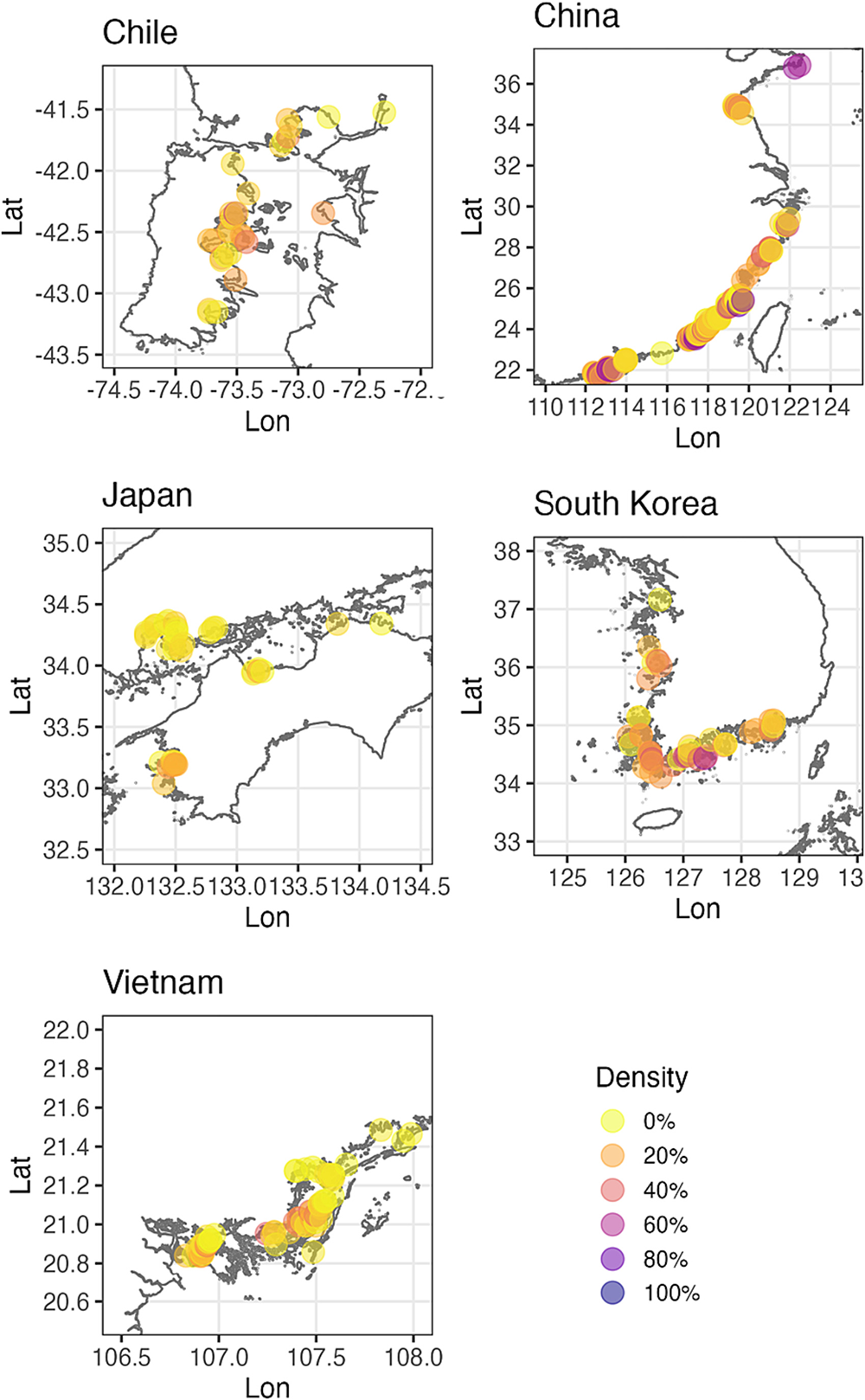
In areas of high-density seaweed or bivalve production, light availability for species below the canopy can be significantly reduced. Differences in the design or spacing of underwater structures between farms may influence the amount of ocean floor shading. The sampling process was somewhat limited by difficulty in differentiating below-surface culture type, particularly for raft structures. Production that strayed outside the most common culture types may have resulted in misidentification from an aerial perspective. This potential source of uncertainty must be acknowledged.
Implications for production and industry
The occurrence of farms in high numbers and densities, particularly South Korea and China, has implications for production. Competition for space and depletion of nutrients in densely farmed areas can negatively affect growth rates and impact production quality and volume. Oysters typically benefit from lower stocking densities during the later period of their growth cycle to produce maximum meat content. Seaweed growth rates are directly linked to nutrient and light levels, resulting in a density-dependent relationship between stocking density and production success in algae aquaculture.
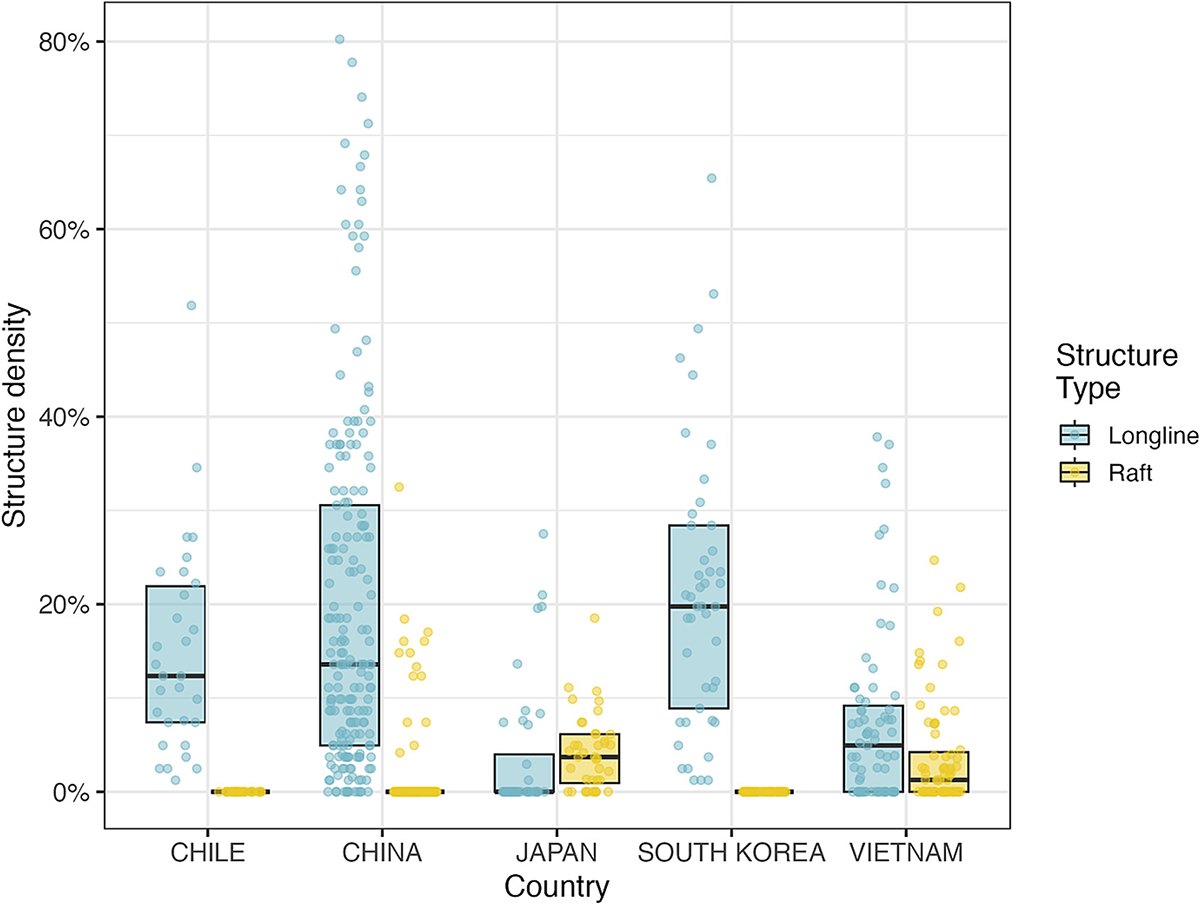
The distribution of structure also has implications for biosecurity and the likelihood of disease and parasite transmission. The transport of pathogens and parasites via currents, and recreational and industrial vehicles is a major issue for the aquaculture industry due to the risk of widespread economic and environmental damage. The number, density and proximity of farms to each other and vulnerable environments is directly related to transmission and infection rate and the type and severity of these impacts. Where farms occur in the highest density, the greatest risk of major disease outbreaks will exist for pathogens with direct transmission, and biosecurity measures more difficult to implement.
Costs associated with farm operation, outside of species cultivation itself, depend on farm placement. Distance from shore directly influences the economic efficiency of production, including access costs and infrastructure requirements as farms become more exposed. On average, in countries with lower production volume and density, structures were closer to shore. This is likely related to the efficiency of placing farms in more accessible and less costly locations. In contrast, in China and South Korea, the increased average distance from shore likely reflects the lack of available locations closer to shore as suitable environments are saturated with farms.
Environmental implications
Various researchers have identified a need to quantify both the regional and global spatial distribution of aquaculture to assess the extent of the ecological pressures that the industry exerts. Constant interactions between farms and the surrounding environment and the alterations that the structures and production species make to ecosystems can create profound changes. As structure density in countries like South Korea and China increases, both production and ecological effects will ensue. Widespread artificial development in marine environments, so-called ocean sprawl, leads to habitat transformation that may encourage the proliferation of pest species.
The environmental benefits of suspended aquaculture extend to the importance of farms to the structure of coastal ecosystems. The structures used in shellfish cultivation provide foraging and refuge opportunities for many marine organisms, including fish, seabirds and fouling species. More recently, attention has turned to the potential ecological services of these farms for shoreline protection via wave attenuation and erosion control. The way aquaculture alters seascapes, both positively and negatively, reflects the need for the type of data presented in this article to inform placement and density regulations of farms.
Relevance to spatial management
Despite the increasing value of the industry, the recent expansion of aquaculture has outpaced regulatory processes, which determine farm placement, due to limited knowledge of the spatial characteristics and needs of aquaculture. Patterns of farm density and placement are highly relevant to spatial planning and the allocation of coastal areas, by informing how space is prioritized for use compared to other coastal stakeholders. Areas of higher production and density, as in South Korea and China, face the challenge of weighing up the risk of environmental and economic loss with the opportunity for benefits and improvements.
Aquaculture management and regulation should combine an understanding of common spatial patterns and the environments required for production to make environmentally beneficial decisions. Understanding the extent to which the carrying capacity of a particular water body is being met is density and site-dependent and is particularly complex in sensitive ecosystems. Here, we have demonstrated that in the production areas of countries like Japan and Vietnam, most infrastructure is located relatively close to shore. Recommendations and regulations regarding farm placement could encourage farm placement in these areas along more vulnerable areas of coastline to reduce the impacts of erosive processes.
Improved spatial planning is necessary for the success of the aquaculture industry and is particularly vital to achieving a more sustainable approach to production. Ultimately, improving our understanding of the extent of shellfish and algal aquaculture informs the approval of more economically valuable and ecologically beneficial farms.
A next step towards understanding, improving, and regulating the impacts of aquaculture will be the application of machine learning techniques to track the development of shellfish and algal mariculture from both a spatial and temporal perspective.
Perspectives
Spatial mapping of surface structures in major production areas revealed insights into the characteristics of shellfish and algae culture. Among the top five producing countries, production was densest in South Korea and China, with China clearly dominating in structure abundance. Longline structures were far more common than rafts in all countries except Japan. Farms were furthest from the coast in China and closest to shore in Vietnam.
Our results create a spatial profile of the aquaculture industry, which can be placed in the broader context of farm placement, impacts and management. Farm distribution, density and structure type all interact to reflect the scale of production, which in countries like China and South Korea is likely linked to population size, cultural traditions and other socioeconomic factors. Production is also concentrated in areas of greatest suitability, particularly where farms are better sheltered from extreme conditions and the cost of access is lower.
Areas of higher density would be affected by changes to flows, nutrient and light levels, as well as having increased risk of disease and parasite transmission. This would influence growth rate and production quality and volume. Likewise, higher presence and density of farms would have negative implications for the surrounding environment, particularly by impacting nutrient cycles, primary production, and the proliferation of pest species. Conversely, the presence of farms may provide ecosystem benefits through nutrient balancing, habitat provision and coastal protection.
There are challenges in managing the footprint of aquaculture, particularly in regulating farm placement and spatial prioritization. Here, we emphasize the importance of considering ecosystem carrying capacities on a site-by-site basis for the success of the aquaculture industry, from both production and sustainability perspectives.
Now that you've reached the end of the article ...
… please consider supporting GSA’s mission to advance responsible seafood practices through education, advocacy and third-party assurances. The Advocate aims to document the evolution of responsible seafood practices and share the expansive knowledge of our vast network of contributors.
By becoming a Global Seafood Alliance member, you’re ensuring that all of the pre-competitive work we do through member benefits, resources and events can continue. Individual membership costs just $50 a year.
Not a GSA member? Join us.
Author
-
Tim Dempster
Corresponding author
Sustainable Aquaculture Laboratory – Temperate and Tropical (SALTT), Queenscliff Marine Science Centre, Deakin University, Victoria 3225, Australia[117,97,46,117,100,101,46,110,105,107,97,101,100,64,114,101,116,115,112,109,101,100,46,116]
Related Posts
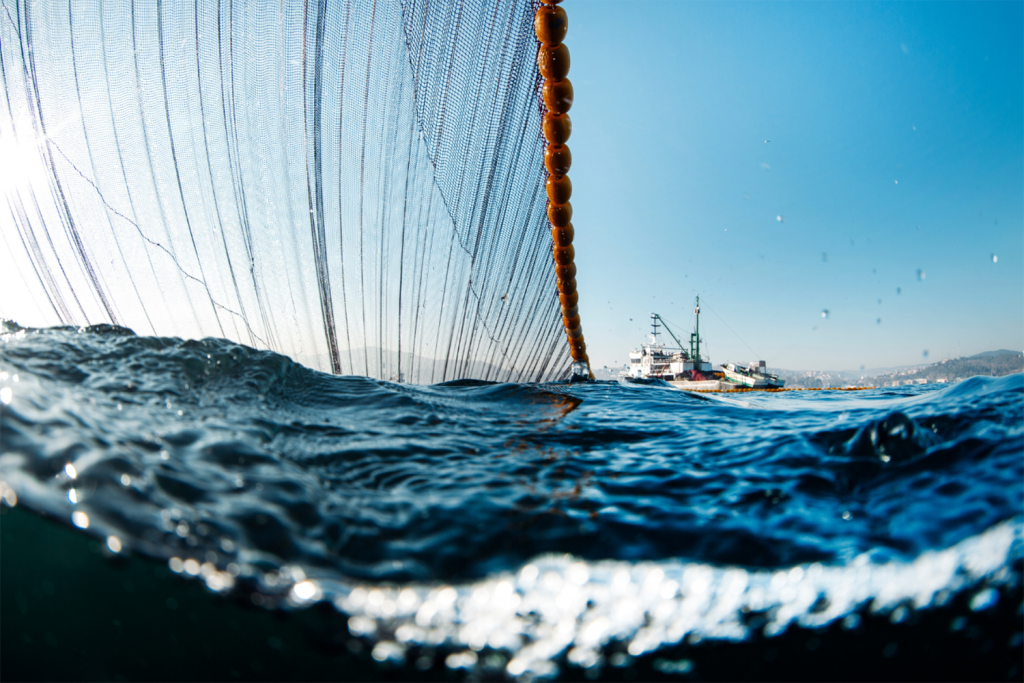
Fisheries
‘They need a good reason to stay’: How one coalition may break a decade of deadlock in the North Atlantic mackerel fishery
GOAL 2022: The North Atlantic Pelagic Advocacy Group, led by Dr. Tom Pickerell, is a finalist for GSA’s inaugural Global Fisheries Innovation Award.
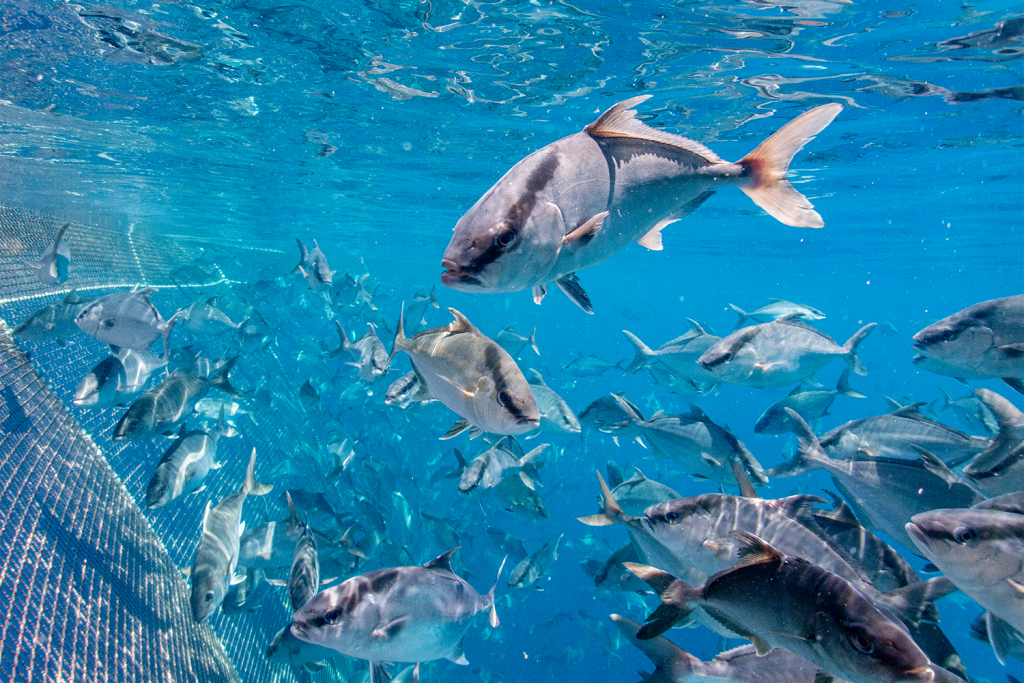
Innovation & Investment
‘Almost as if they’re wild’ – Offshore aquaculture startup Forever Oceans is gaining confidence farming in deep water
With patented modular fish enclosures, sensors and software, Forever Oceans uses offshore aquaculture to raise Kanpachi fish, with bold expansion plans ahead.
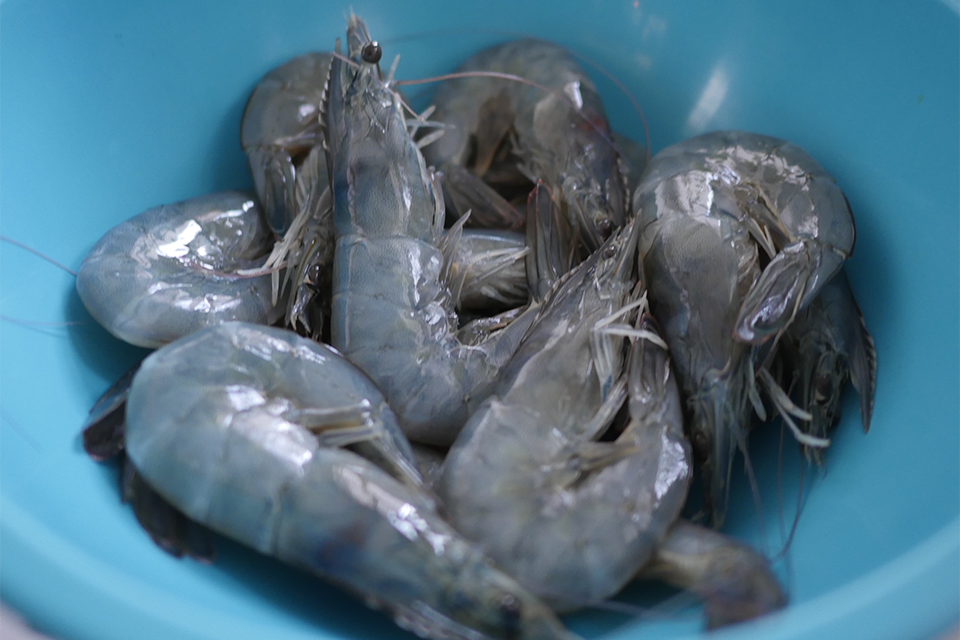
Intelligence
‘We’re doing a lot of things that aren’t being done,’ says Los Angeles shrimp farm founder
Steve Sutton, CEO of TransparentSea Farm, joins the Advocate and Aquademia to talk shrimp and the carbon-capture technology investors should look at.
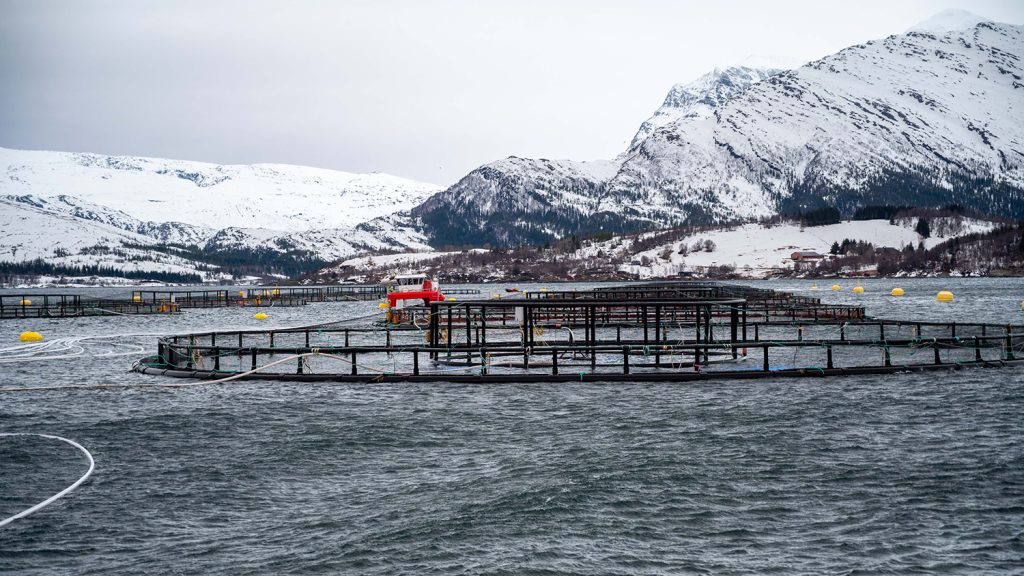
Responsibility
‘Why not make an entire pen?’ Aquaculture equipment company putting recycled plastic to the strength test
Aquaculture equipment specialist AKVA group and collaborators are building the world’s first aquaculture pens made entirely from recycled plastic.



